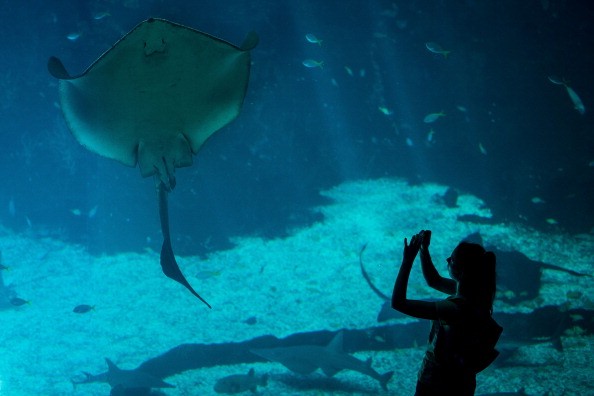A large and healthy manta ray population found on the Ecuador coast is ten times larger than the usual species.
The study explained that the place is considered healthy and favorable to a large manta ray population to roam over the coast of Peru and southern Ecuador.

Resort World Sentosa's Marine Life Park, January 18, 2013 in Singapore
The species of manta ray has been threatened due to habitat loss, illegal and commercial fishing practices, and unintentional bycatch.
Manta rays could reproduce slowly, which could threaten their population more.
The discovery would help scientists to look into the species of manta ray that was discovered healthy.
The recent research findings were reported in Marine Ecology Progress Series, which can also be read on the Phys.org website.
According to the National Geographic, manta rays are intelligent species and considered the largest rays globally, noting they could reach a size of up to 29 feet.
They are intelligent creatures because of their brain size and cognitive ability to map environments.
The report added that they are two important and distinct species: the reef manta ray and the oceanic manta ray.
The National Geographic explained that the meaning of the name 'manta' means blanket. They thrive in tropical and temperature ocean waters globally and are said to go with small groups or live alone.
Manta ray has a unique way of feeding, known as filter feeders. They opened their mouths, allowing krill and zooplankton.
A large manta ray on Ecuador's coast
According to the study, the discovery of the oceanic manta ray on the Ecuador coast gave a sense of optimism because they are vulnerable to human threats.
The researchers closely monitored the oceanic manta ray, although they are elusive.
The study explained that the manta ray patterns could be unpredictable.
The study's co-author Joshua Stewart explained that the population of manta rays they discovered was healthy and large. Stewart is also from the Marine Mammal Institute in OSU's College of Agricultural Sciences.
Also Read: Scientists Discover Three New Ground Snake Species in Ecuador
Stewart added that manta rays could have an estimated 1,000 to 2,000.
However, the area was reported to have an estimated population of 22,000 manta rays.
The study investigated data from them and the photo contributions of recreation divers (between 2005 and 2018).
The report added that the researchers discovered in 1990 that oceanic manta rays visited in August and September on the Isla de la Plata on Ecuador's coast.
Furthermore, the study explained that the area is considered popular for diving tourists.
The researchers explained that manta ray possesses a spot pattern on their bellies, allowing researchers to monitor their movements.
According to the study's lead author, Karina Harty explained that many of the photos were from drivers helping with manta rays photos, which assisted the researchers in their study.
Ultimately, the researchers added that the place could become a global hot spot for endangered species.
However, the researchers urged the conservation of the large manta rays found on Ecuador's coast, and continuous monitoring is important to prevent the decline of the mantas' population.
Because of the threat, the National Geographic explained that manta rays are protected in international waters.
Related Article: Ecuador Monitors and Protects Species of Birds on Galapagos Islands from Bird Flu Threat
For more similar stories, don't forget to follow Nature World News.
© 2024 NatureWorldNews.com All rights reserved. Do not reproduce without permission.




![Roundworms with Short Memories 'Stop Forgetting' When Frozen or Given Lithium [Study]](https://1471793142.rsc.cdn77.org/data/thumbs/full/70295/280/157/50/40/roundworms-with-short-memories-stop-forgetting-when-frozen-or-given-lithium-study.jpg)
